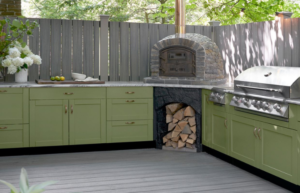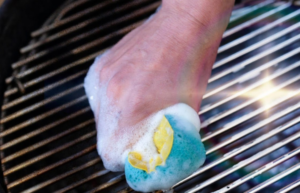4 Essential Pool Maintenance Tips

In the movies, there’s always a hot pool boy, ready and willing to keep your swimming area spotless, and provide related services. In real life, you might have a pool service, but you probably do most of the cleaning yourself. If you’re a netizen, you might even have a digitised pool maintenance regime. Basically, you can install a control post next to the swimming pool, link it to your home WiFi, and synchronise it with your phone.
On the phone (or tablet or laptop), you can install a pool care app like Connect My Pool, Pool Pal, or Pool Doctor. These apps work with your digital pool box, allowing you to programme a pool robot, switch on the pool lights, heater, pump, pool cover, and more. You can do this from anywhere – the back yard or the moon – as long as your phone has internet access, and as long as your home WiFi extends to the pool. Pool apps work on home spas too. Whether you’re using a smartphone or something more analogue, here are 4 essential pool care tips.
Go go gadget pool cleaner
A robotic pool cleaner can seem like a really fun toy, but it’s pretty handy too. Some models come with self-drive and self-park options. This means you can use your phone to instruct the robot to get inside the pool, do a deep clean, remove itself from the pool, and get back into its parking spot. This can be done even when you’re not physically on the premises.
The pool robot does the same cleaning you would do by hand, so if you don’t have one, use a pool vacuum or pool brush to clean the floor and sides of the pool. This gets rids of any dust, debris, or filmy layers accumulated at the bottom or walls of the pool. This process – by machine or hand – prevents algae from building up on your pool’s surfaces, and you need to do it once a week or so.
Get rid of surface dirt
Dirt beneath the water isn’t as easy to spot, even when your pool is calm and clear. However, surface dirt is an eyesore and can attract pests. If leaves or twigs stay on the water too long and start to rot, they can attract flies and other insects. They overwork your pool skimmer and can spread disease-bearing germs in the water. Plus, it just looks bad.
Once a day, give the pool a once over with a skimmer pole. Just pick out the leaves and sticks. You should also empty and rinse the skimmer basket once a week. If your poolside is particularly ‘woodsy’ or if your neighbourhood has frequent breezes and elaborate landscaping, consider a pool cover. It could be a basic leaf cover or something automated and solar-powered. Some pool covers can be opened and shut using your smartphone pool app.
Review pool chemicals
All pools use chlorine – even mineral pools and salt-water pools. The difference is in the amount and type. For example, salt-water pools use cartridges to convert salt into liquid chlorine and back in a perpetual cycle. This means it uses far less chlorine powder than a regularly chlorinated pool. Mineral pools rely more on magnesium chloride, silver ions, copper ions, and borates, with just a dash of actual chlorine.
Other chemicals in your pool include algaecides, cyanuric acid, calcium, bromine, muriatic acid, and calcium hypochlorite. And yet, even with all these chemicals, you want your pool pH to settle around 7.2, the pH of fresh potable water. This means you should routinely test the chemical levels and adjust them accordingly. You can do this on your phone as well, though you’ll have to physically restore the right pH.
How deep is your pool?
Before we get pools of our own, we assume the only issue with any pool is chlorine. In reality, the pH is far more important, and it’s a cumulative figure based on all the pool chemicals you’ve used. So if swimmers feel an itch, burn, or redness in their eyes, it’s because of the pool pH, not the chlorine volumes in the pool.
Shocking the pool can usually resolve this, but first, you should check alkalinity and acidity then correct as necessary. At the same time, check how much water is in the pool. Too much evaporation could destroy the pool filter, and might indicate a leak that needs repairing. Pool covers are great for minimising the pace of evaporation – and they cut down your heating bill too – so consider putting one in.
Read Also:
{
“@context”:”http://schema.org”,
“@type”:”Article”,
“author”:{“@type”:”Person”,
“name”:”Bayazid Bostami”},
“dateModified”:”2018-10-03T10:52:00+10:00″,
“datePublished”:”2018-08-25T16:56:00+10:00″,
“description”:”In the movies, there’s always a hot pool boy, ready and willing to keep your swimming area spotless, and provide related services. In real life, you might have a pool service, but you probably do most of the cleaning yourself. If you’re a netizen, you might even have a digitised pool maintenance regime. Basically, you can install a control post next to the swimming pool, link it to your home WiFi, and synchronise it with your phone.”,
“headline”:”4 Essential Pool Maintenance Tips”,
“image”:{“@type”:”ImageObject”,
“height”:500,
“url”:”https://expertzine.com.au/wp-content/uploads/2018/08/Low-Maintenance-Pool-Tips.gif”,
“width”:850},
“keywords”:”Pool maintenance”,
“mainEntityOfPage”:{“@id”:”https://expertzine.com.au/low-maintenance-pool-tips/”,
“@type”:”WebPage”},
“publisher”:{“@type”:”Organization”,
“logo”:{“@type”:”ImageObject”,
“height”:”512″,
“url”:”https://expertzine.com.au/wp-content/uploads/2017/02/cropped-Zine.jpg”,
“width”:”512″},
“name”:”Expertzine”},
“isAccessibleForFree”:true,
“hasPart”:{“@type”:”WebPageElement”,
“isAccessibleForFree”:true}
}





